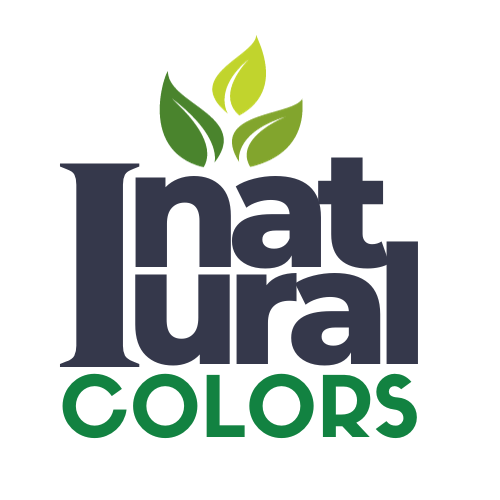Beautiful Plants For Your Interior

Natural Colors
Introduction
Have you ever wondered why the leaves turn vibrant red in the fall or why your favorite lipstick gets its beautiful hue? It’s all about natural colors! Natural colors, derived from plants, animals, and minerals, have been enchanting humans for centuries. They are not just visually appealing but also have a fascinating science behind them. Let’s dive into the world of natural colors and uncover the secrets that make them so special.
History of Natural Colors
Ancient Uses of Natural Colors
Natural colors have been part of human civilization for thousands of years. Ancient Egyptians used plant extracts and minerals to create stunning cosmetics and artworks. The famous indigo dye, derived from the indigo plant, was a prized possession in many ancient cultures, symbolizing royalty and prestige.
Evolution Over Time
Over the centuries, the use of natural colors has evolved significantly. From early cave paintings using earth pigments to the sophisticated extraction methods of today, the journey of natural colors is a testament to human ingenuity and the desire for beauty.
Sources of Natural Colors
Plant-Based Colors
Plants are a rich source of natural colors. Chlorophyll gives leaves their green color, while carotenoids provide the oranges and yellows found in fruits and vegetables. Anthocyanins are responsible for the reds, purples, and blues seen in many flowers and berries.
Animal-Derived Colors
Some natural colors come from animals. For example, the brilliant red dye carmine is extracted from cochineal insects. Tyrian purple, once used by Roman emperors, is derived from the mucus of certain sea snails.
Mineral Colors
Minerals have also been used to produce colors. Ochre, a naturally occurring pigment found in clay, ranges in color from yellow to deep orange. Lapis lazuli, a deep blue stone, was ground into powder to create ultramarine, one of the most sought-after pigments in medieval art.
Chemical Composition of Natural Colors
Organic Compounds in Plant-Based Colors
Plant-based colors are often composed of complex organic compounds. Chlorophyll, for instance, contains a porphyrin ring with a magnesium ion at its center, which captures light energy for photosynthesis. Carotenoids, like beta-carotene, have long chains of conjugated double bonds that absorb light in the visible spectrum.
Pigments in Animal Colors
Animal-derived pigments, such as carmine, contain carminic acid, which gives the dye its intense red color. Melanins, another group of animal pigments, are responsible for the coloration in hair, skin, and feathers.
Minerals in Natural Pigments
Mineral pigments are composed of inorganic compounds. Hematite, an iron oxide, provides red hues, while malachite, a copper carbonate, produces green. These minerals have unique crystalline structures that reflect light in various ways, giving them their distinctive colors.
Extraction Methods
Traditional Methods
Traditional extraction methods for natural colors often involved simple processes like grinding, boiling, and fermenting. Indigo dye, for example, was traditionally extracted by fermenting indigo leaves, a process that releases indican, which is then converted to indigotin, the blue pigment.
Modern Techniques
Today, advanced techniques such as chromatography and spectrophotometry are used to isolate and purify natural pigments. These methods allow for greater precision and consistency in the quality of the colors extracted.
Applications of Natural Colors
Food Industry
Natural colors are widely used in the food industry to enhance the appearance of products. Beet juice, for instance, is used to color beverages and desserts, while turmeric provides a vibrant yellow to curries and snacks.
Cosmetics
In the cosmetics industry, natural colors are prized for their safety and skin benefits. Henna, derived from the Lawsonia inermis plant, is used for hair dyeing and body art. Mica minerals add shimmer to makeup products like eyeshadows and highlighters.
Textiles
Natural dyes have a long history in textile manufacturing. Indigo, madder, and saffron have been used for centuries to dye fabrics in rich, lasting colors. Today, there’s a resurgence in using these dyes as sustainable alternatives to synthetic ones.
Benefits of Using Natural Colors
Environmental Impact
Natural colors are generally more environmentally friendly than their synthetic counterparts. They are biodegradable and often require less energy to produce, reducing their overall carbon footprint.
Health Benefits
Many natural colors come with health benefits. For example, anthocyanins found in berries are powerful antioxidants. Turmeric contains curcumin, known for its anti-inflammatory properties.
Sustainability
Using natural colors promotes sustainability. They are renewable resources that, when harvested responsibly, can support local economies and maintain ecological balance.
Challenges in Using Natural Colors
Stability and Shelf Life
One of the main challenges with natural colors is their stability. They can be sensitive to light, heat, and pH changes, which can affect their color and shelf life.
Cost Considerations
Natural colors can be more expensive to produce than synthetic ones. The extraction process can be labor-intensive, and the yield may vary depending on the source and growing conditions.
Regulatory Issues
There are strict regulations governing the use of natural colors, especially in the food and cosmetics industries. These regulations ensure safety but can also pose challenges for manufacturers in terms of compliance and cost.
Comparing Natural and Synthetic Colors
Differences in Composition
Natural colors are derived from organic and inorganic sources, while synthetic colors are made from chemical compounds. This fundamental difference affects their properties, uses, and impact on health and the environment.
Advantages and Disadvantages
Natural colors are often seen as safer and more environmentally friendly, but they can be less stable and more expensive. Synthetic colors are usually cheaper and more stable but can have adverse health and environmental effects.
Innovations in Natural Colors
New Sources and Extraction Methods
Research is ongoing to discover new sources of natural colors and improve extraction methods. For example, algae and fungi are being explored as potential sources of novel pigments.
Technological Advancements
Advancements in biotechnology and nanotechnology are opening up new possibilities for natural colors. These technologies can enhance the stability and vibrancy of natural pigments, making them more competitive with synthetic options.
Case Studies
Successful Use in Food Industry
A major beverage company recently switched to natural colors for its fruit-flavored drinks, using extracts from carrots and spirulina. This change was well-received by health-conscious consumers and boosted the brand’s image.
Impact in Cosmetic Industry
A leading cosmetics brand launched a new line of lipsticks using carmine and beetroot extracts. These products gained popularity for their rich colors and natural ingredients, appealing to eco-conscious buyers.
Future Trends
Growing Market Demand
There is a growing demand for natural colors as consumers become more aware of their benefits. This trend is expected to continue, with more industries adopting natural colors in their products.
Potential Developments
Future developments may include genetically modified plants designed to produce higher yields of natural pigments or new fermentation processes to create pigments sustainably in labs.
Environmental Impact
Eco-Friendly Alternatives
Natural colors offer eco-friendly alternatives to synthetic dyes, reducing pollution and conserving resources. They can be part of a broader strategy to promote sustainable practices across various industries.
Reducing Carbon Footprint
Using natural colors can help reduce the carbon footprint of manufacturing processes. By sourcing locally and using renewable resources, companies can minimize their environmental impact.
Consumer Awareness
Educating the Public
Educating consumers about the benefits of natural colors is crucial. This can be done through marketing campaigns, product labeling, and public education initiatives.
Influence of Social Media
Social media plays a significant role in raising awareness about natural colors. Influencers and brands use platforms like Instagram and TikTok to showcase the beauty and benefits of products made with natural ingredients.
Conclusion
Natural colors are more than just beautiful; they are a testament to the incredible diversity and ingenuity of nature. From their ancient uses to modern applications, they continue to captivate and inspire us. As we move towards a more sustainable future, the demand for natural colors is only set to grow, promising exciting innovations and a brighter, more colorful world.
FAQs
- What are natural colors? Natural colors are pigments derived from plants, animals, and minerals. They are used in various industries for their aesthetic and functional properties.
- How are natural colors extracted? Natural colors can be extracted using traditional methods like boiling and grinding, or modern techniques like chromatography and spectrophotometry.
- Why are natural colors considered better than synthetic ones? Natural colors are often seen as safer and more environmentally friendly. They are biodegradable and can offer health benefits, unlike some synthetic colors that may have adverse effects.
- What are some common applications of natural colors? Natural colors are used in the food industry, cosmetics, textiles, and more. They enhance the visual appeal and offer natural alternatives to synthetic dyes.
- What challenges do manufacturers face with natural colors? Challenges include stability, cost, and regulatory compliance. Natural colors can be sensitive to environmental factors and may be more expensive to produce.



